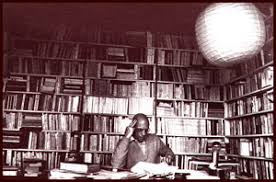The body is an intentional structure in that it is always already an engaged perspective. There is no view from nowhere, which we might have access to, or invoke, such that the world and all the phenomena therein might be accounted for as third person processes, objectively and for all-time. For Merleau-Ponty, the body guarantees our involvement in the ‘here’ and ‘now,’ even though it might be difficult to say just what is meant by this ‘here’ and this ‘now.’ It seems important to say, however, that we already encounter them in some way before we come to see them as questionable. It is our being-in-the-world that allows us to engage with a ‘here’ and ‘now’ without having to ask what they are, without having to provide ourselves with an account of their constitution, they are, as it were, taken pre-reflectively. To say that “the body is the vehicle of being in the world” is to point to the body as the location of this pre-reflective engagement with the world. The body is, therefore, both that which we are, as perceiving subjects, and the view or perspective from which we see the world. Merleau-Ponty’s primary criticism of the physiological and psychological accounts of embodiment is that they come on the scene too late and have already missed that which has been given in the movement of being-in-the-world. The pathological phenomena of phantom limb and anosognosia reveal the primacy of being-in-the-world in the act of perception and the body as the seat of perception.
Merleau-Ponty’s account of the phenomena of the phantom limb and anosognosia emerges from his dialectical engagement with the physiological and psychological accounts of the same phenomena. His account of being-in-the-world, as a pre-objective view of the world and phenomena therein, is a mediation between the failures of the physiological and psychological accounts. By placing being-in-the-world firmly in the unified structure of the body, the body becomes the invisible center of perception. In this sense, the availability of the body’s capacities would be that which is most often taken for granted in our everyday way of being-in-the-world. The body is, therefore, the product of biological and cultural inheritance. Furthermore, each particular moment brings with it the entirety of my past and the past of the species. The body is, therefore, both a personal and practical field and the anonymous field of a body in general. Explained through being-in-the-world, the phenomenon of phantom limb appears as the pathological adherence to a world wherein the absent limb would still be available and afford itself to our intentions. Similarly, in the case of anosognosia, the subject is pre-refectively aware of a deficiency on the level of his being-in-the-world, but simply refuses to reflect upon it in order not to feel the absence. Merleau-Ponty’s account upsets the traditional account, which suffers from the prejudice of presence, by returning to the layer of lived experience, which encounters the body as an “I can”.



No comments:
Post a Comment